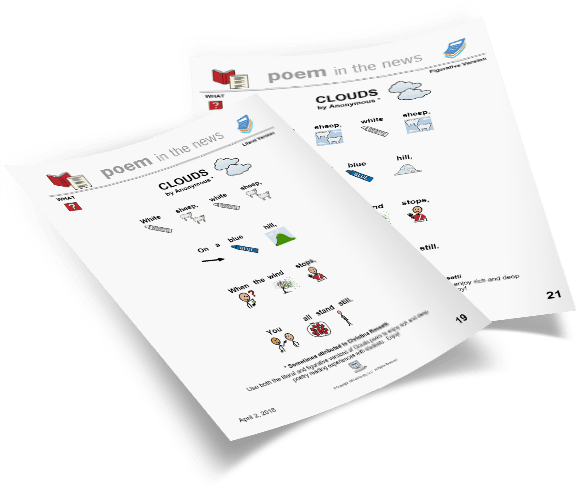

He wrote the code in November and began monitoring what it was spitting out. Harris had been working on projects connected to the presidential race for over a year, and after election day suddenly found himself with idle hands. It helps that the project came at little expense to the Times - Harris put it together on his own during a fit of post-election letdown. “But you crave these smaller projects, which are just as valuable.” Similarly, projects like the haiku bot may seem silly on the surface, but the underlying code, the use of natural language processing, or other components could be valuable to future projects, Lavallee said.

But why build a haiku bot? “A lot of the projects we work on here are these incredibly big heaves, which are very, very gratifying,” said Mainland. That the Times has the ability to build a haiku bot isn’t surprising. Outside of Tumblr, the Times will promote the haiku through the paper’s flagship Twitter account. That’s why the haiku are actually images, which fits well with the aesthetic of Tumblr, she said. Lexi Mainland, social media editor for the Times, said they wanted the poems to be able to stand on their own and be readily sharable. “If someone sees the site, or the image of an individual haiku and shares it on Tumblr, and it gets them to think about who we are and what we do, or gives them a moment of pause, I think we’ve succeeded in a way,” Lavallee said. In its own poetic way, Times Haiku will be another access point for Times stories, said Marc Lavallee, assistant editor for interactive news at the Times. “You find it compelling and it drives you to read the article that it came from.” (Think of it as a more lexicographically strict version of Paul Ford’s SavePublishing.) “There’s something appealing about finding these snippets of text, these turns of phrase and pulling them out,” Harris said. The haiku have a strange way of getting at the heart of a story, or teasing out interesting fragments from an article. The result, much like is bizarre, quirky, and kind of zen. The program was built in Python Harris made his own version in Ruby on Rails. The backbone of that project was an open source program called Haiku Finder, which crawls through text to generate haiku.

Harris was inspired by Haikuleaks, a similar project that found poetry in the cache of diplomatic cables released by WikiLeaks in 2010. “Sometimes it can be an ordinary sentence in context, but pulled out of context it has a strange comedy or beauty to it,” Harris said. Though because of our transition to a new commenting system we couldn’tįormally judge the contest as we usually do, we read all 320 submissions carefully, and found many we would like to honor.īelow, thoughts on and excerpts from the work of 15 students who especially impressed us.Account icon An icon in the shape of a person's head and shoulders. This year, since so many students chose to react to upsetting news events through constructing spare, heartfelt poetry, we were also taken by the depth

New, and, perhaps most of all, a real love of language. It invariably shows a close reading of source material, an inventiveness in reworking words and phrases to say something The Opinion essay “ The Cost of Daydreaming” by Vivian Gornick inspired and provided the words for a poem we honored in our 2015 Found Poetryįrom race in America and the California drought to the Apple Watch and Brooklyn’s Morbid Anatomy Museum, student-poets posting to our Sixth Annual Found Poem Challenge found inspiration in a huge range of Times articles.Īs we’ve noted many times in the past, the work that stands out in this contest always has certain characteristics.


 0 kommentar(er)
0 kommentar(er)
